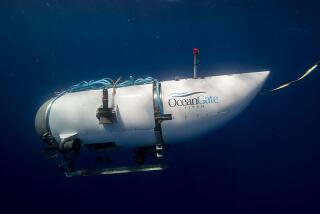Never say die
- Share via
Blake and Neil displayed a classic instinct of people who survive — never giving up, said Bernstein, who runs the Boulder, Colo., wilderness training program, one of the nation’s oldest.
“People who pull through survival situations never question their chance to live — they keep trying despite the odds. The will to live ultimately kept them alive.”
Here are his tips on what to do when things go wrong.
Preparedness: “Blake and Neil could have spent more time assessing the risks of running the Koyukuk early in the season. The shoulder seasons present unusual risks, and hitting a wall of ice would not be out of the realm. A few inquiries with experienced local rafters might have given them more caution.”
Awareness: “Thickening ice on the banks should have given them some concern. They should have been more vigilant in noticing any changes in the river.”
Gear: “Since capsizing is not an impossible scenario, someone should have had a ditch kit or other essential gear. A pouch with a space blanket, signal mirror, food bars, fish hooks, etc., would have been great to have.”
Safety: “Technically, it is usually a mistake for a lost party to split up. But in this case, I can see why Blake felt the need to hasten any rescue effort, and given the way things turned out, it seems to have worked for him.”
Signaling: “Making a commotion on the ground was excellent. So was Blake waving the life vest and making himself visible to the pilot.”
More to Read
Sign up for The Wild
We’ll help you find the best places to hike, bike and run, as well as the perfect silent spots for meditation and yoga.
You may occasionally receive promotional content from the Los Angeles Times.









